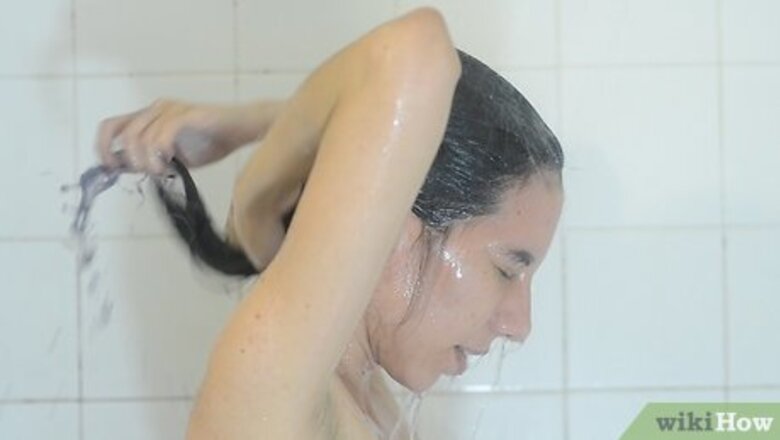
views
Preparing Your Hair for Straightening
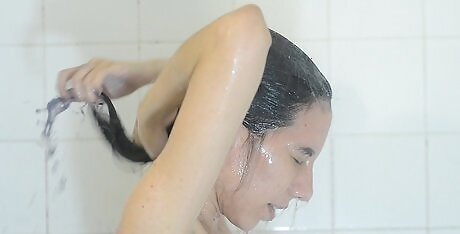
Wash and condition your hair. Straightening works best when you start with clean, well-nourished hair. Wash with a gentle shampoo to avoid stripping your hair before you use heat on it and make it more prone to damage. To ensure that your hair is properly hydrated, follow up with a straightening conditioner. They typically contain moisturizing ingredients, such as argan oil, coconut water, and macadamia oil, that help smooth your hair. Thick hair tends to be dry, so if yours is particularly dehydrated, wash with a moisturizing shampoo for added hydration. If your hair is very dry or damaged, you may want to use a deep conditioning mask before you straighten your hair. They are thicker than traditional conditioners, and typically sit on your hair for 10 to 20 minutes before you wash off the formula.

Towel dry your hair. When you’re done washing and conditioning your hair, use a towel to dry it until it’s only damp. Partially drying your hair before you blow dry means less time that you’ll have to use the heat on it, which is important when you’re going to be using a straightening iron. For the best results, use a microfiber towel to dry your hair. The material is more absorbent and softer than traditional cotton so it doesn’t rough up your cuticles as much while you’re drying.
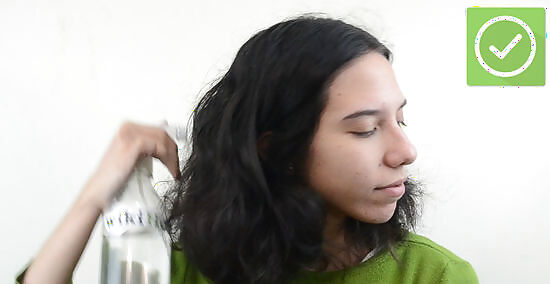
Apply a heat protectant. Heat can be very damaging to hair, so it’s important to protect your locks before you blow dry and straighten them. A heat protectant product coats the hair so it doesn’t burn as easily and dry out. You can find heat protectant sprays and lotions, but creams typically work best for thick hair. Argan oil can work well as a heat protectant too. A little bit of heat protectant goes a long way, so don’t apply too much. Use just enough to lightly coat the length of your hair. You don’t need to apply it to the top of your head or scalp.
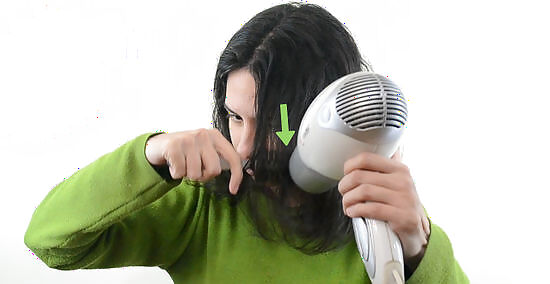
Blow dry with a round brush. Thick hair usually requires a little extra work to straighten, so it helps to blow dry it first. For the smoothest hair, though, use a round bristle brush as you dry your locks. Work the brush through your hair to pull it as straight as possible so you won’t need the straightening iron to do as much work. Make sure your hair is completely dry before reaching for the straightening iron. You should never use your straightening iron on damp hair. That can cause serious damage and breakage because the moisture on your hair can actually boil it. To keep from overheating your hair, switch between your blow dryer’s hot and cool settings as you dry it. Choose a brush with natural bristles or a combination of natural and synthetic bristles. Using a brush with entirely synthetic bristles may cause frizz. If you’re concerned about using too much heat on your hair, you can also allow your hair to air dry. But be sure that it’s completely dry before you straighten it. If your hair is extremely thick, curly, or wavy, though, blow drying with a round brush may be necessary to get it as straight as possible.
Choosing a Straightening Iron

Get the size right. Straightening or flat irons come with plates in a variety of sizes. Typically, the thicker that your hair is, the larger the plates you should use. For thick, coarse hair, your straightening iron should have 1- to 2-inch plates. That will allow you to cover a larger surface area in less time. For thick hair above the shoulders or shorter, choose an iron with plates that are between 1- and 1 ½-inches wide. For thick hair that’s shoulder length and longer, opt for an iron with plates that are between 1 ½- and 2-inches wide.
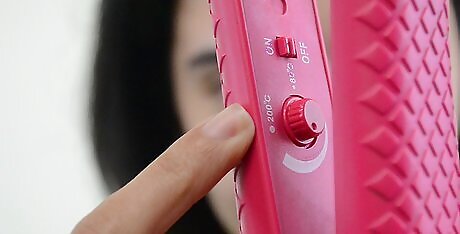
Choose one with variable heat settings. Some straightening irons only come with low, medium, and high heat settings. However, it’s best to choose an iron that allows you to choose a precise temperature. That’s because you want to use the lowest amount of heat possible to straighten your hair, so it helps to be able to select a specific temperature setting. For thick, coarse hair, you usually need to set the straightening iron between 350 and 400 degrees, so make sure that yours is adjustable to that range. When you’re straightening, start at 350 degrees and see if the iron can successfully straighten your hair at that temperature. If it’s not hot enough, adjust by 10 or so degrees, stopping when you find the temperature that is hot enough to do the job.

Select the plate material carefully. The plates in a straightening iron can be made of several different types of material, and some do more damage to your hair than others. The best option for straightening thick hair are plates made of ceramic, titanium, or tourmaline because they heat more evenly so they don’t damage the hair as much. They also release negative ions that can help make your hair smoother and shinier. Avoid straightening irons that are made of ceramic- or teflon-coated plates. They don’t heat evenly, so they can easily dry out thick hair.
Using the Iron
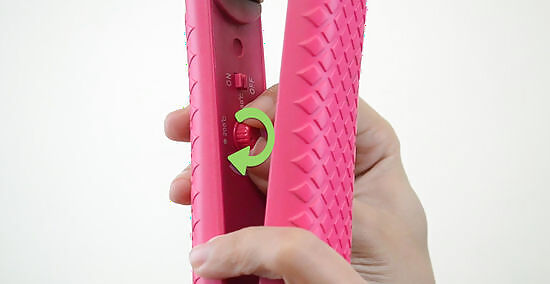
Heat the iron. A straightening iron typically requires several minutes before it heats up to the right temperature. Plug your iron in, and adjust the heat settings according the instructions. Most irons will alert you when they’ve reached the proper temperature by either beeping or lighting up in a certain spot. Wait until your straightening iron is fully heated before using it on your hair. Using it at too low a temperature can be bad for your locks because you’ll need to go over the same sections of hair more than once to get it completely smooth.
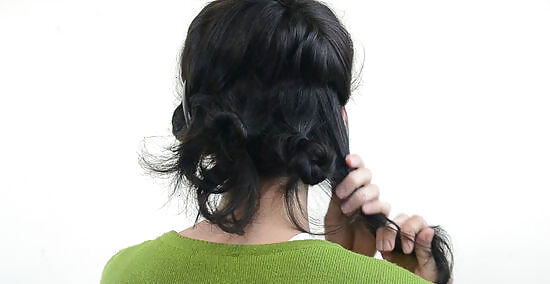
Divide your hair in sections. When you’re straightening your hair, it’s best to work in small sections so you can be sure to smooth all of it. That’s especially true with thick hair, which tends to be more difficult to straighten. Start by dividing your hair in half and clipping the top section to your head. Divide the lower half into sections that are approximately 1- to 2-inches wide, depending on the size of your iron’s plates. Dividing your hair into sections can help keep you from accidentally running the iron over sections that you’ve already straightened and exposing them to too much heat. The thicker your hair is, the more sections that you should create for straightening. Once you finish with the bottom section of hair, unclip the top half and begin smoothing it.
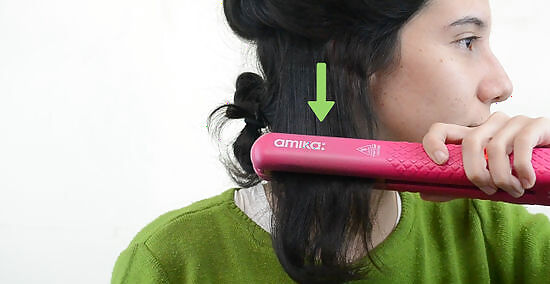
Move the iron in a fluid motion. Starting approximately a half inch below the roots of your hair, quickly glide the straightening iron over each section of hair. Keep your pace steady, so the iron doesn’t linger in any one spot longer than another. Keep in mind that you may have to go over some sections of hair more than once to completely straighten them. It helps to use a hand mirror to look at the sections at the back of your head to ensure that they’re as straight and smooth as you’d like.
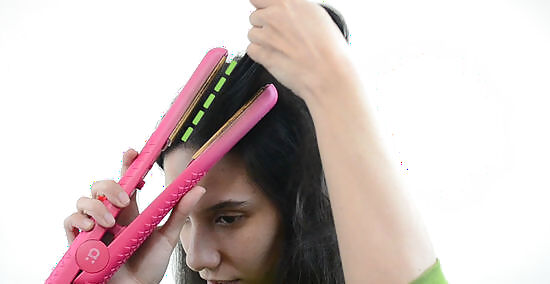
Get closer to the roots at the crown. For the sections of hair at the crown of your head, you need to adjust your straightening movements. Lift the sections away from your scalp so you can get the straightening iron as close to your roots as possible, and pull the iron outward from your head to get the smoothest finish. Press firmly as you move the iron over your hair and out from your head to ensure that your hair is as straight as possible.
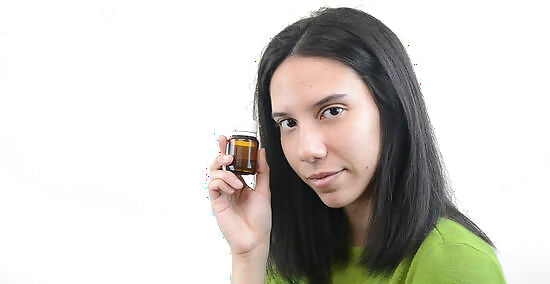
Apply a shine product. To finish off your straight style, you should apply a silicone-based shine product after you straighten your hair. For thick, coarse hair, a serum works best. Apply two to three drops to your palm, and work it between your hands. Lightly smooth it over the length of your hair to coat the strands so they catch the light. Be careful not to apply too much shine serum. It can wind up making your hair look greasy. The roots are usually the healthiest part the hair, so they don’t usually require extra shine. Apply your shine product only to the length of your hair.




















Comments
0 comment